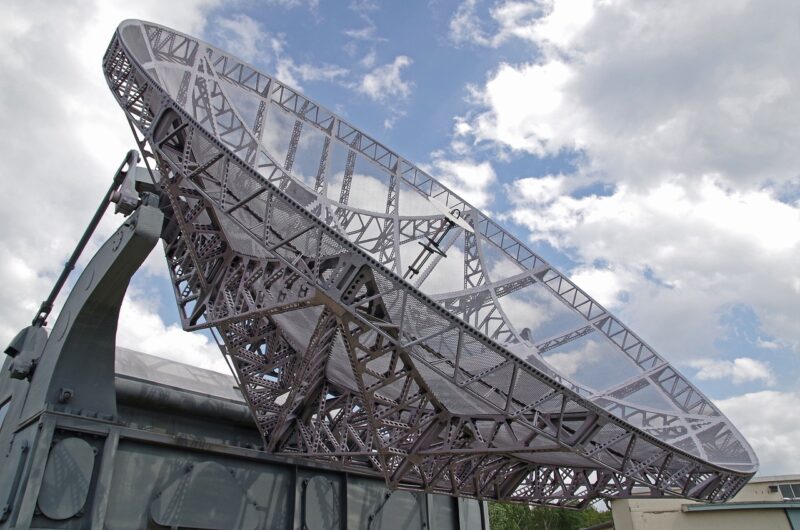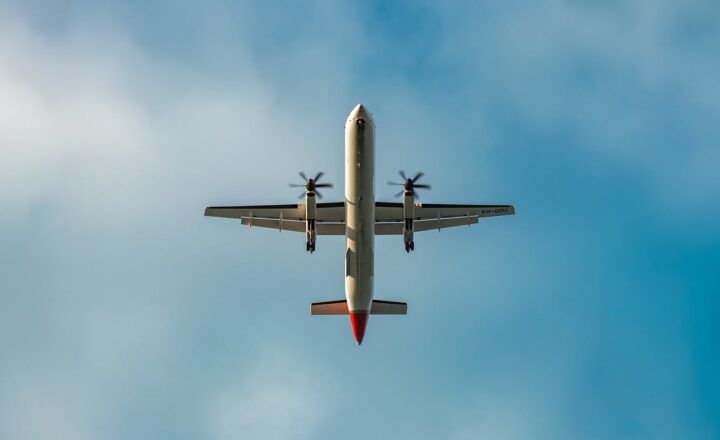
Weather radar is a crucial technology that has transformed our understanding of meteorological phenomena and greatly improved aviation safety. It allows for the detection and tracking of precipitation, keeps pilots aware of severe weather conditions, and ultimately minimizes risks associated with flying. In this article, we will explore the intricate workings of weather radar technology, its types, applications, and its pivotal role in ensuring safe flights.
1. Understanding Weather Radar Technology
Weather radar is an advanced system that uses radio waves to detect and measure precipitation, providing real-time data on weather conditions. These systems emit radio waves that bounce off precipitation particles and return to the radar unit, which then analyzes the reflected signals to provide detailed information about the intensity, movement, and velocity of the weather phenomenon.
Types of Weather Radar:
– Doppler Radar: This type can determine the wind speed and direction by measuring the frequency shift of the returned signals, making it invaluable for detecting severe weather like thunderstorms and tornadoes.
– Pulse-Doppler Radar: A combination of both pulse radar and Doppler radar, enabling better detection of precipitation and wind patterns.
– Phased Array Radar: This cutting-edge technology allows for rapid updates and scanning of the atmosphere, providing a comprehensive view of weather systems as they evolve.
These radars are typically mounted on towers, airplanes, or satellites, covering vast areas and enabling continuous monitoring of weather patterns.
2. How Weather Radar Works
The working principles of weather radar can be broken down into a few key steps:
Emission of Radio Waves:
Weather radar systems emit short pulses of radio waves into the environment. These waves travel through the atmosphere until they encounter precipitation particles, such as rain, hail, or snow.
Reflection of Signals:
When the emitted radio waves meet precipitation particles, they scatter and reflect back toward the radar unit. The amount of energy returned indicates the intensity of the precipitation.
Signal Processing:
Radar systems process the returning signals to extract valuable meteorological information. By measuring the time it takes for the signal to return, the radar can determine the distance to the precipitation, while the strength of the returned signal provides insights into its intensity.
Data Visualization:
The processed data is then visualized on computer screens in the form of radar images, showing the location, intensity, and movement of precipitation. This information can be translated into various formats, such as color-coded maps, which help meteorologists and pilots understand weather conditions at a glance.
3. The Role of Weather Radar in Aviation Safety
The aviation industry relies heavily on weather radar to ensure safe and efficient flight operations. Here’s how it contributes:
Real-Time Weather Monitoring:
Weather radar provides real-time updates on weather conditions, allowing pilots and air traffic controllers to make informed decisions before and during flights.
Avoiding Severe Weather:
Pilots use weather radar to detect storms, turbulence, and other hazardous weather phenomena in their flight path. This information allows them to alter their routes or altitude to avoid dangerous conditions, which is critical for passenger safety.
Improving Flight Planning:
Airlines utilize weather radar data during flight planning to determine optimal routes, fuel efficiency, and flight times. Understanding the weather forecast enhances operational efficiency and passenger comfort.
Emergency Situations:
In situations where strong weather systems develop unexpectedly, weather radar serves as a critical tool for guiding pilots through emergencies. The ability to visualize nearby storms aids pilots in making quick decisions to ensure crew and passenger safety.
4. The Importance of Continuous Improvement in Radar Technology
As technology advances, so does the effectiveness of weather radar systems. Continued improvements in radar technology, including the adoption of better scanning mechanisms and data analysis algorithms, significantly heighten the accuracy and reliability of weather information. Emerging trends include:
Integration with Other Technologies:
Modern aviation employs a multifaceted approach to monitoring weather by integrating radar data with satellite imagery, ground station observations, and other meteorological tools for a more comprehensive understanding of atmospheric conditions.
Enhanced Data Processing:
Advancements in machine learning and artificial intelligence allow for improved analysis of radar data, enabling faster and more accurate weather predictions while enhancing automated decision-making in flight operations.
Wider Coverage and Accessibility:
Advancements in phased array radar technology promise better coverage and faster updates on storm developments, extending the capability of weather radar even further while increasing its accessibility to smaller regional airports and operators.
5. Conclusion: The Lifeline of Aviation
Weather radar is an invaluable tool that plays a critical role in ensuring the safety and efficiency of modern aviation. By providing real-time updates on weather conditions, it enables pilots and air traffic controllers to take proactive measures to avoid hazardous weather, ultimately saving lives and minimizing disruptions in air travel. As technology continues to evolve, the capabilities of weather radar will likely expand, further enhancing flight safety and overall aviation operation efficiency.
Understanding how weather radar works and its significance in aviation not only helps in appreciating its value but also invokes a sense of responsibility in us to constantly innovate and embrace new technologies that contribute to safer skies for everyone.







